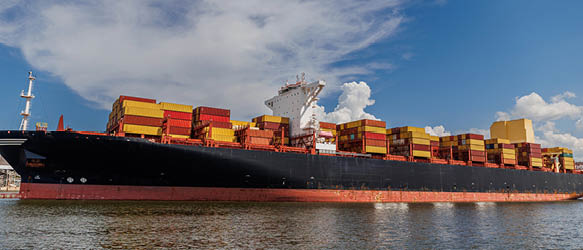Looking into the historical context of Scandinavian foreign direct investment in the Baltic states, TGS Baltic Managing Partner Ivars Grunte, Walless Partner Rolan Jankelevitsh, Ellex Valiunas Partner Ruta Pumputiene, and Klauberg Baltics Managing Partner Theis Klauberg explore the economic and legal ties between the two regions.
Scandinavian Presence
Foreign investments have long been a driving force in the Baltic region with the historical and ongoing influence of the Scandinavian region standing out. “Scandinavian countries, particularly Sweden and Finland, have historically had very strong FDI positions in all three Baltic countries,” Jankelevitsh notes. “To my knowledge, in 2022 Swedish and Finnish companies in aggregate had over one-third of the entire Estonian inbound FDI, while Latvia and Lithuania had fairly modest single-digit percentages.”
“Historically, Baltics have been looking towards Scandinavia for FDIs,” Grunte agrees, adding that in Latvia, long-term statistics support this observation: “At the end of 2022, the largest investment was from Sweden – 29% of the total FDI stock in Latvia’s economy.” According to Grunte, “trends show that over the course of the last four years, the investment amount is steadily growing and has even tripled from Sweden comparing 2019 to 2023.”
“The Scandinavian countries, particularly Sweden, Finland, and Denmark, have been significant sources of FDIs in the Baltic region,” Pumputiene continues. “Sweden has been one of the Baltic states’ most prominent sources of FDIs. Some notable Swedish companies with substantial investments in the Baltics include Swedbank, SEB, Telia Company, and IKEA.”
Finland, according to Pumputiene, is another Scandinavian country that has invested significantly in the Baltic region: “Finnish companies, especially in the technology and telecommunications sectors, have shown interest in the Baltics.” Additionally, she notes that “while Denmark is less prominent than Sweden and Finland in terms of FDIs in the Baltics, Danish companies have also made investments in the region,” with Danish firms often exploring “opportunities in various industries, such as logistics and renewable energy.”
However, Klauberg argues that although Scandinavia and Finland, in particular, have been major sources of substantial investments, “the largest number of inbound investments are from Germany.” According to him, “there is a steady rise in investments from Germany in Latvia, Lithuania, and Estonia.”
Diverse FDI Focus
When it comes to FDI patterns, it appears that foreign investors have their sights set on diverse sectors. “When analyzing FDI allocation across sectors, it becomes evident that the majority of investments gravitate towards professional, scientific, and technical services, constituting 21% of the total,” Grunte highlights. “Substantial foreign investments have also found their way into financial operations (15%), real estate and construction (15%), trade activities (13%), and the manufacturing sector (12%).”
“As to FDI by field of activity, the exact breakdown varies from year to year, but traditionally the financial sector and real estate have been the areas of particular focus for Scandinavian and other investors alike,” Jankelevitsh adds. “In Estonia, in addition to these two sectors, manufacturing, energy, IT and telecommunications have also been popular among foreign investors, including Scandinavian ones.”
The Selling Points
In terms of what made the Baltics attractive, Grunte says that EU accession played a major role for Latvia. Following its accession to the EU, “FDI saw a swift upsurge, culminating in its peak in 2022, amounting to EUR 22.6 billion,” he notes. “Key catalysts for this surge included fresh market prospects for international investors, a robust monetary policy, Latvia’s strategic geographical advantage nestled between the European Union and CIS nations, and the extensive and well-maintained infrastructure.” Grunte further notes that “in the wake of the severe impact of the global financial crisis, Latvia implemented sweeping austerity measures.”
Jankelevitsh, on the other hand, believes the internal regulatory landscape and efforts made Estonia attractive to the Scandinavian states: “I assume this is mostly due to their favorable holding and investment fund regimes, and also some favorable aspects in their tax treaties with Estonia.”
Current Trends
At present, the trajectory of Scandinavia-driven FDIs appears uncertain. “It is difficult to see a clear trend in the FDI flows from Scandinavia, however, what we have seen recently is that most significant investments are fairly rarely made by Scandinavian investors,” Jankelevitsh notes. “On the contrary, some of the largest recent transactions were actually exits by Scandinavian investors – one example is the divestment of the Baltic operations of HKScan to the Estonian capital-based Maag group.”
Grunte, however, offers a more positive perspective: “Looking ahead, the historical preference of the Baltic states for Scandinavian FDIs remains a significant factor in the region’s economic landscape. Sweden’s substantial investment in Latvia, coupled with contributions from other European nations, underscores the enduring appeal of this market.”
Nordic Law Firms in the Baltics
Despite their close ties, Nordic law firms appear to have a limited presence in the Baltic market. “Strictly speaking, there are no Nordic law firms present in the Baltic market except that few firms share their brand with local law firms,” Jankelevitsh points out. “Some years ago, a couple of larger Finnish firms displayed their brand in the names of Baltic firms. Borenius, for example, ended that practice eight years ago.”
Among the well-known Nordic law firms operating in the Baltics, Pumputiene highlights that “Njord maintains a prominent presence in the Baltic region, boasting offices in Riga, Tallinn, and Vilnius.” Klauberg also adds that no major Nordic firms operate in the Baltic market, “with the exception of Glimstedt, Njord, and Magnusson, which have their main practice in Sweden, Denmark, and Finland, respectively.”
Even among those who have a presence in the Baltics, Grunte explains that “due to the relatively small size and tough legal market in Latvia, Nordic law firms primarily collaborate with the top local law firms on specific deals and cases. Although several Nordic law firms have a presence in Latvia, they are not the dominant players.” According to him, there are “two law firms with Nordic origins operating in Latvia – Magnusson and Njord – and they are not in the top 10 by revenue or number of lawyers.”
Regarding the entry of other Nordic law firms into the Baltic market, Pumputiene emphasizes that Scandinavian law firms “do not currently express a significant inclination to establish their own offices within the Baltic countries. This tendency can be attributed to productive collaborative relationships characterized by the delivery of top-tier services that already exist between Nordic companies and their Baltic counterparts.”
Similarly, Grunte points out that “the Latvian legal market’s relatively small size and unique characteristics are expected to continue fostering closer collaboration between Nordic law firms and local counterparts for large and complicated deals and cases.” He notes that “in the current market situation, it is unlikely that Nordic law firms will open their representative offices.”
“I think the larger Scandinavian law firms are quite used to and comfortable with the business model of having ties with several Baltic firms, without extending their brand to the Baltics and generally not having any exclusive relationships with any single Baltic firm,” Jankelevitsh concludes.
This article was originally published in Issue 10.10 of the CEE Legal Matters Magazine. If you would like to receive a hard copy of the magazine, you can subscribe here.

















